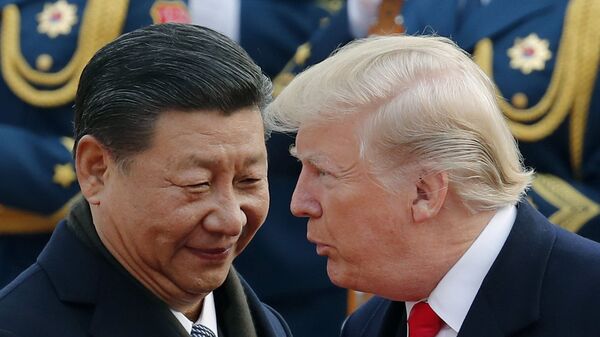US President Donald Trump and Chinese Vice Premier Liu He signed the so-called "phase one" trade deal on Wednesday, marking the first step in the solution of the "trade war" between the two superpowers. Under the historic deal, China commits to purchasing an additional $200 billion in US farm products, manufactured goods, energy and services over the next two years to help ease Washington's trade deficit.
Although the US will reduce some tariffs on Chinese products, $250 billion of Chinese imports will still be subject to a 25% tariff, while $125 billion of Chinese goods will be subject to a 7.5% levy.
“I think Trump does actually have the right to claim a victory here, because it’s a totally unusual approach to [rack] up tariffs and try to break out concessions on the other side. No one has done that in decades … it’s a victory which may unravel in the future, because the fundamental cause of the imbalances is still the fact that the American dollar is the currency for international trade and thereby by definition, the American currency is overvalued,” Keen told host Brian Becker.
“The [Chinese] government’s running a trade surplus overall, so it’s got the capacity to purchase more imports without driving itself into a trade deficit which would unravel the insulation that China currently has from international disturbances. But can it consume that much more on top of everything else, or will there be a shift in buying from one country to another? It may be as well the Chinese are doing the classic ‘Yes, we understand what you have said,’ rather than ‘Yes, we agree to what you have proposed,’” Keen added.
US Treasury Secretary Steven Mnuchin on Wednesday confirmed that US tariffs on Chinese goods will continue until the second phase of the deal.
"These tariffs will stay in place until there is a phase two," Mnuchin told media outlets. "If the president gets a phase two quickly, he'll consider releasing tariffs as part of phase two. If not, there won't be any tariff relief. It has nothing to do with the election or anything else. There's no secret agreement."
In an interview with Fox Business TV network on Wednesday evening, US Vice President Mike Pence said American and Chinese negotiators had “already begun discussions on a phase two deal.”
However, according to Keen, the trade war may have allowed China to “dramatically” improve its productive capacity. By contrast, as Becker pointed out, certain US sectors, such as the hardwood furniture industry, have dried up. China used to be the largest market for American hardwoods, with the US hardwood industry exporting around $2 billion worth of products to China yearly, according to the Farm Bureau. However, Chinese tariffs on hardwoods have cut about 50% of the industry’s revenue since 2017.Since the trade war, China has resorted to purchasing hardwood from other countries.
“China having built the capacity … then they don’t need America anymore and are now redirecting their export markets to the rest of the world,” Keen noted.




